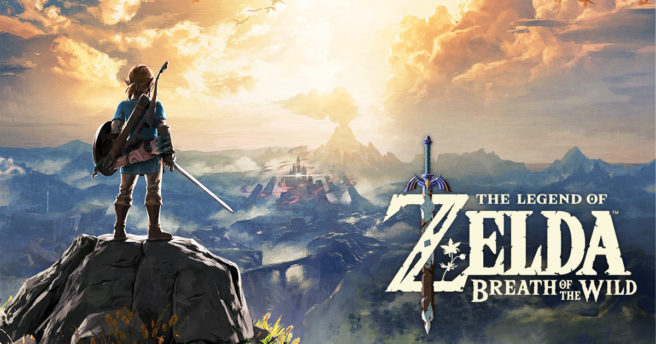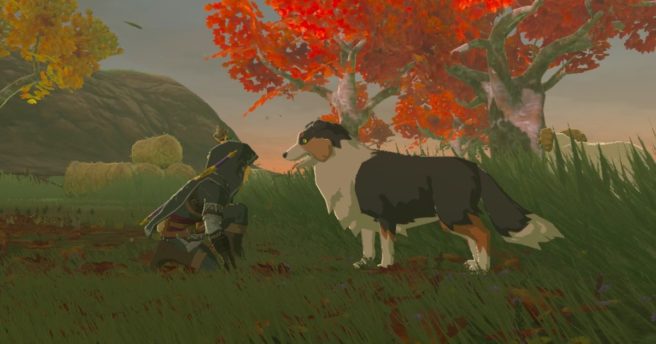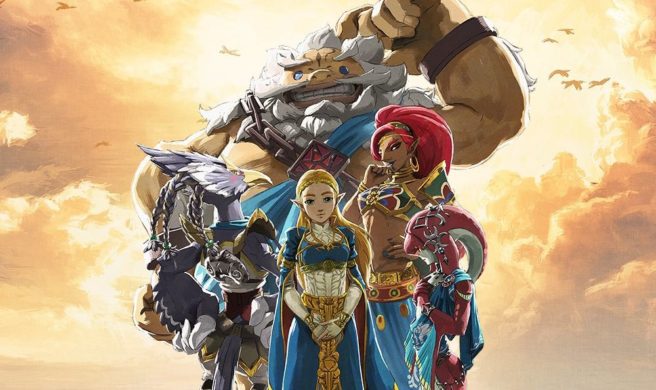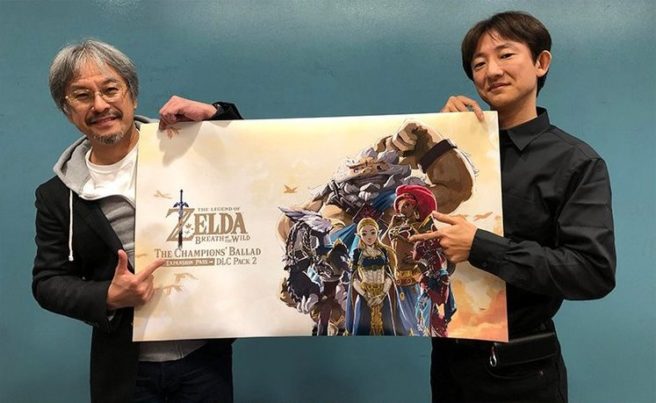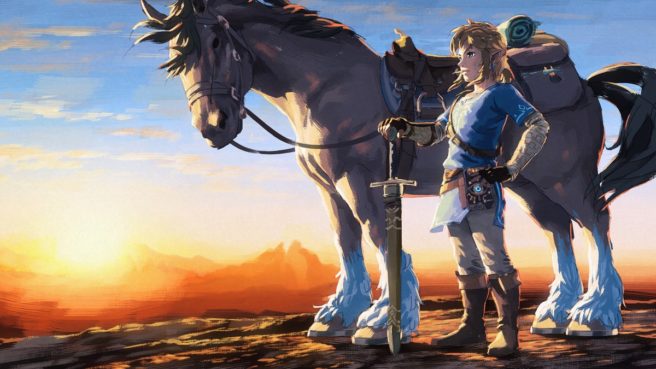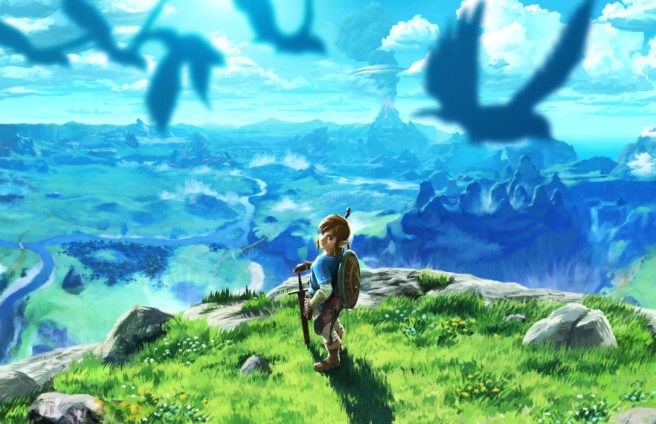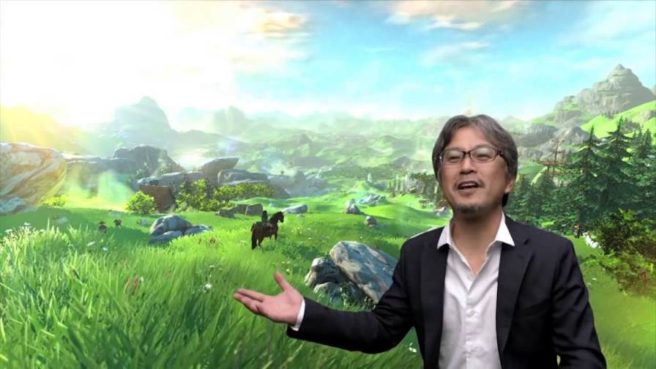Zelda: Breath of the Wild devs on the thinking behind Shrines and Divine Beasts, lack of long dungeons
Posted on 7 years ago by Brian(@NE_Brian) in News, Switch, Wii U | 33 Comments
Breath of the Wild was a complete reinvention of the Zelda formula, and many past staples were either discarded or reworked. One example of this is the dungeons. Whereas past Zelda titles featured long, unique dungeons with and a particular item to obtain, Breath of the Wild instead mostly has a ton of smaller Shrines scattered throughout the world and a few Divine Beasts that are thematically similar.
Zelda series producer Eiji Aonuma and Breath of the Wild directed Hidemaro Fujibayashi commented on Nintendo’s approach to Shrines and dungeons in the debut episode of the Nintendo Power podcast. We’re first able to hear from Fujibayashi, who explains that big dungeons would mean that players would spent too much time there.
Nintendo on Zelda’s future, Breath of the Wild director says he has “lots of ideas and lots of motivation”
Posted on 7 years ago by Brian(@NE_Brian) in General Nintendo, News | 100 Comments
Nintendo delivered Zelda: Breath of the Wild’s second DLC pack last week. Now that the game’s development is truly finished (at least that we know of), fans can’t help but wonder what the future holds for the franchise.
As you would expect, Nintendo isn’t ready to delve into any specific plans just yet. However, Breath of the Wild director Hidemaro Fujibayashi and series producer Eiji Aonuma did talk about their mindset going forward.
Zelda: Breath of the Wild director on why you can’t pet dogs in the game
Posted on 7 years ago by Brian(@NE_Brian) in News, Switch, Wii U | 27 Comments
While journeying through Hyrule in The Legend of Zelda: Breath of the Wild, you may encounter dogs. They tend to be found at stables and towns.
Dogs aren’t just there to make areas more lively. You can bond with them, they’ll follow you around, and can lead you someplace special. Unfortunately, you can’t actually pet them.
Zelda: Breath of the Wild devs on The Champions’ Ballad DLC – approach to the story, dungeon design, new outfits, more
Posted on 7 years ago by Brian(@NE_Brian) in News, Switch, Wii U | 23 Comments
Nintendo has published the latest parts of its interview with Zelda: Breath of the Wild director Hideomaro Fujibayashi and series producer Eiji Aonuma. Once again, the discussion focuses mostly on The Champions’ Ballad DLC. The two talked about how they went about approaching new story content this time around, dungeon design, the new outfits, and more.
You can read the discussion in full below. Nintendo warns of spoilers, but there’s not really anything that’s discussed in terms of the story scenes or sequences specifically. Still, keep that warning in mind before proceeding.
Nintendo talks scrapped hookshot from Zelda: Breath of the Wild, experimented with dual double hookshots that would let you move like Spider-Man
Posted on 7 years ago by Brian(@NE_Brian) in News, Switch, Wii U | 127 Comments
Earlier in the year, Nintendo revealed that the hookshot was scrapped from Zelda: Breath of the Wild. The hookshot has previously appeared in a number of Zelda games, but didn’t make it in for the Switch and Wii U title.
Nintendo spoke more about the hookshot in Zelda: Breath of the Wild and why it wasn’t a fit as part of a new interview with IGN. Series producer Eiji Aonuma started out with the following:
Zelda: Breath of the Wild devs on how the Master Cycle Zero came to be, new horse gear
Posted on 7 years ago by Brian(@NE_Brian) in News, Switch, Wii U | 27 Comments
Zelda: Breath of the Wild has a special treat for those who clear the game’s new DLC. After completing The Champions’ Ballad, players will be rewarded with the Master Cycle Zero. Yes, Link can ride through Hyrule on a motorcycle.
At The Game Awards on Thursday night, Zelda series producer Eiji Aonuma and Breath of the Wild director Hidemaro Fujibayashi spoke more about the DLC. The two developers explained how the Master Cycle Zero came to be, and also discussed the new horse gear.
Zelda: Breath of the Wild director on the game’s reaction, timeline placement, approach to Ganon, more
Posted on 8 years ago by Brian(@NE_Brian) in News, Switch, Wii U | 38 Comments
Game Rant was recently able to interview Zelda: Breath of the Wild director Hidemaro Fujibayashi. Fujibayashi weighed in on the game’s early reaction, timeline placement, motion control puzzles, inspiration for the Divine Beasts, early concepts, and why Ganon doesn’t speak.
You can read up on these excerpts from the interview below. For the full discussion, head on over here.
Zelda director Hidemaro Fujibayashi would like to further explore design ideas used in Breath of the Wild
Posted on 8 years ago by Zack in Switch, Wii U | 11 Comments
In a recent interview with Gamerant, Hidemaro Fujibayashi commented that he would like to further explore the game design that was used to create The Legend of Zelda: Breath of the Wild. As the director of said game, he would likely be in a position to do such a thing in future installments. His full answer to the question of whether open-world design will be the new standard for the Zelda series going forward, is as follows:
We can’t really say much at the moment but there are lots of things in this current game design we still want to explore. If, as a result of that exploration, we feel positive we can provide our audience with new experiences it’s possible this design could become the standard.”
While Breath of the Wild is a huge phenomena, it would still be quite a departure for the series to stray away from the design philosophy it’s adhered to so closely since Ocarina of Time. Only time will tell what the future holds for the Legend of Zelda now.
Zelda: Breath of the Wild – messages from Eiji Aonuma and Hidemaro Fujibayashi
Posted on 8 years ago by Brian(@NE_Brian) in News, Switch, Wii U | 29 Comments
In the official Zelda: Breath of the Wild guide, two of the game’s most important developers left messages for readers. Series producer Eiji Aonuma and director Hidemaro Fujibayashi both reflected on creating the massive title.
Aonuma’s message was particularly interesting. In it, he spoke about the developing process of “creating while playing”. Aonuma also touched on not being completely satisfied with development due to “a desire to keep evolving and growing.”
As for Fujibayashi, he touched on the difficulties of trying to rethink Zelda’s conventions. He also said that the team has “on occasion observed things happen in the field that not even we, who created the game, could have imagined.”
We thought it might be interesting to share both of these messages from Aonuma and Fujibayashi. Read the full transcriptions below.
Zelda: Breath of the Wild devs scrapped idea of stabbing and resting on weapons following Miyamoto feedback
Posted on 8 years ago by Brian(@NE_Brian) in News, Switch, Wii U | 71 Comments
Not every idea made it into The Legend of Zelda: Breath of the Wild. For instance, Nintendo considered including tiny people as well as the Hookshot and Beetle items.
Art director Satoru Takizawa and director Hidemaro Fujibayashi revealed another cut idea while speaking with GameSpot. At one point, players would be able to stab their weapon into a wall. Doing so would let Link recover stamina.
Midway through development, the team decided against including the mechanic. This was in large part due to feedback from Shigeru Miyamoto, who essentially vetoed the idea due to it being illogical. The developers thought about stabbing weapons into cracks or crevices, though that wouldn’t work either since you’d be limited in where it could be done.
Takizawa and Fujibayashi said:
